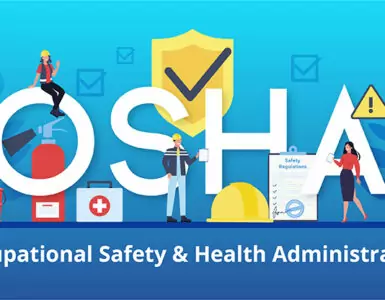Companies that run in a smooth and effective manner and have minimal constraints on worker performance can decrease injuries by 38 percent as worker opinions improve, according to survey results.
According to a recent University of Georgia study, a worker’s perception of safety in the workplace and the work-life balance established by businesses has a significant effect on on-the-job injury.
“We’ve known for some time that certain occupations are more dangerous than others due to a variety of physical and other hazards,” said Dave DeJoy, UGA professor of health promotion and behavior. “But in the last 20 years, there has been growing evidence that management and organizational factors also play a critical role. That is, actions taken or not taken at the organizational level can either set the stage for injuries or help prevent them.”
DeJoy and Todd Smith, a recent graduate of the Health Promotion and Behavior doctoral program in the UGA College of Public Health, authored a study to examine U.S. safety climate perceptions among a diverse sample of occupations and worker groups—from offices to factories—and to highlight the factors linked to injury. The results will appear in the March issue of the Journal of Safety Research.
Companies that run in a smooth and effective manner and have minimal constraints on worker performance can decrease injuries by 38 percent as worker opinions improve, according to survey results. A worker’s perception of a positive safety climate can decrease injuries by 32 percent. The safety climate category assessed worker perceptions on the importance of their safety in their work organization.
“We can design the best safety controls, but they must be maintained, and that falls on management,” Smith said. “Enacted policies and procedures—not formalized ones but those acted upon—define a climate of safety.”
In addition to factors identified by the study to decrease injuries, work-family interference was established as a significant risk for occupational injury.
“We used to think work was one thing and family was another, but now there is a realization that work-life balance affects performance and productivity,” DeJoy said.
The study looked at the mutual interference between job and family demands. In situations where work interferes with family life or family demands affect job performance, they found that the risk for injury increased 37 percent.
Consistent with previous studies performed by the Department of Labor Statistics, they found whites had higher injury rates than blacks, but both had lower rates than the “other” category, which is predominately made up of Hispanics.
“These results provide guidance for targeting interventions and protective measures to curtail occupational injury in the U.S.,” Smith said.
DeJoy was part of a team of researchers that worked with NIOSH to put together a quality of work life survey module that featured a number of scales and measures assessing different job and organizational factors. This module was included as part of the General Social Survey and administered to a national representative sample of American adults.
In their study, DeJoy and Smith assessed occupational injury risk in terms of socio-demographic factors, employment characteristics, and organizational factors for 1,525 respondents using data from the quality of work life module. The study identified race, occupational category, and work-family interferences as risk factors for occupational injury and safety climate and organizational effectiveness as protective factors.
“The data suggests effects are pronounced and generalized across all occupations,” Smith said.
“Most prior research on organizational factors has focused on single occupations or single organizations,” DeJoy said. “There has been a clear need to examine these factors across a diverse array of occupations and employment circumstances to see how generalizable or pervasive these factors are.”
The nine factors they examined were participation, work-family interference, management-employee relations, organizational effectiveness, safety climate, job content, advancement potential, resource adequacy, and supervisor support.
This Article Originally Posted here




